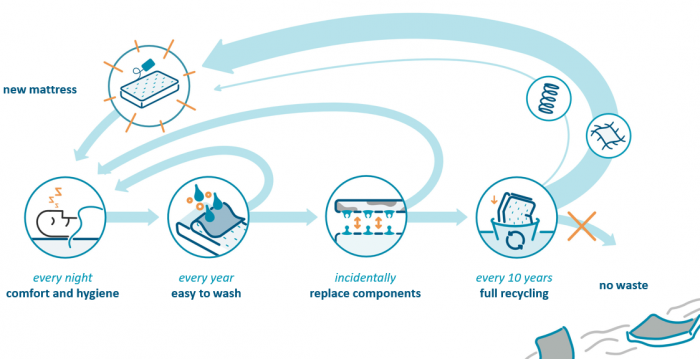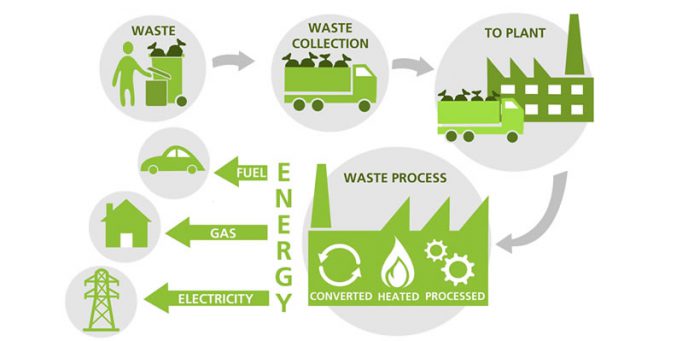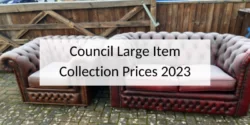Thoughts on Junk
About Junk
Stuff we have but no longer want. Junk. Rubbish. Waste. However we call it, it tends to be invisible for many of us. It’s not something cool to talk about with friends and family or for us to dig into.
However, we constantly buy and use things we rapidly want to get rid of. It adds up to billions of tonnes per year worldwide that contribute a significant share to greenhouse emissions, especially if they end up in landfill.
Luckily, governments have systems in place for everyday waste to be rapidly collected, disposed of and recycled in most cases, but it’s when waste is bulkier that we find it more annoying and difficult to get rid of.
By bulky waste we mean stuff that’s too big for the normal bin - like garden waste, furniture, mattresses, carpets, sofas, soft furnishings, appliances, washing machines, dishwashers, bric-a-brac, packaging, and DIY waste.
In addition to this, a lot will be going on in the junk world in the years ahead, and we want to become active participants in this change. Let us tell you a bit more about the future of waste.
A Circular Economy
First and foremost, the linear make-use-dispose model on which we’ve built our society needs to be ditched as soon as possible, and replaced by a Circular Economy that designs waste and pollution out of the system, keeps products and materials in use for longer and regenerates natural systems.

A great illustration of how manufacturers will think about products in the future is DSM-Niaga. A company that is redesigning medium-life bulky products like mattresses, furniture or carpets, among others, from scratch so that they can be 100% recyclable. They also promote the use of non-toxic modular materials that support recycling and easy maintenance.
For instance, every year, it is estimated that 35 million mattresses are disposed of in Europe and 20 million in the US. DSM-Niaga partnered with Auping, a large Dutch mattresses manufacturer, to develop a modular and fully recyclable mattress. See illustration below.

Feel free to find out more about them and their products here.
We anticipate more and more manufacturers redesigning products from scratch and converting them into raw materials that can be easily converted into new products again and again. How exciting.
And if this happens to be the case, we at LoveJunk, hope to be around with a solution that helps manufacturers get their products back as quickly, safely and efficiently as possible, so that they can go ahead and convert them into new ones, again and again.
Turning Waste into Energy
Second, we will get better at turning junk into energy. The global waste to energy (WTE) market is expected to reach USD 43.96 billion by 2024, according to a new report by Grand View Research. Both thermal (or incineration) and biological technologies present big opportunities to recycle different types of waste into biodiesel, and significantly reduce global carbon emissions.

We, at LoveJunk, are excited and committed to ensuring most of your junk gets diverted from landfill and is put back to use. We always promote disposal facilities with high recycling rates for junk collected through our platform. And we encourage our collectors to find a second home for the stuff they collect through LoveJunk.
Recycling More
Third, we will recycle a lot more than we do today. There is definitely room for clever technologies that can help us sort materials easily and quickly for recycling, but there is also room for retailers, consumers and governments to step in and take the lead.
Retailers should feel more and more responsible for the end of life of the products they sell. Plastic disposable packaging is a clear example. Did you know that about 50% of plastic packaging can’t get recycled and ends up in landfill?

Consumers' attitude towards waste also needs to change. We as consumers buy a lot more than we need, we often buy products we never use, or food we never eat. And we don’t recycle as much as we say or think.
For example, did you know that 73% of our clothes end up in landfill?, that one third of the food production in the world ends up in the bin? Or that more than 50% of bulky items end up in landfill?
There is no question, especially now during this COVID-19 crisis, that the rhythm of consumption we follow is carelessness and unsustainable, and that we have a lot to do not only to reduce our rates of consumption that will result in less junk, but to care to provide a better end of life to the products we buy or consume.
In fact we are seeing an increased appetite for second-hand products, see below an illustration of the Thread Up 2019 Resale report about how the apparel second-hand market is primed to explode in the years to come:

Last but not least, governments also have a significant role to play, helping accelerate change by implementing new policies that bring awareness to key players. From charging customers for the weight of their waste, to discouraging retailers from selling products in packaging that can not be recycled.
Our team at LoveJunk, wants to be an active participant in this movement towards reducing waste and improving the end of life of products. Initially, by providing an easier, cheaper, safer and greener way for businesses, tradesmen and householders to get rid of stuff that is too big for the bin.
But also, by building a community of clients and collectors who share these beliefs as much as we do, and with whom we can continue to build creative solutions to reduce waste and provide junk a better end of life. Get ready to join us.
What can we do starting today?
In the meantime, please let us share with you, what we as individuals can do starting today to reduce junk as much as possible.
Here are some simple principles you can apply:
- Buy products that can be recycled. Packaging labels and recycling symbols are now present on lots of everyday items for us to check.
- Buy products that last longer. They do not have to be more expensive necessarily, just do some research on the materials you’re purchasing and their quality.
- Learn to repair rather than discard.
- Recycle more but let’s do it right. Check out your council’s tip for local rules for recycling, as these vary from one council to another.
- Buy more consciously or in other words, buy things that you’re going to use. How many times have you bought something you have never used?
- Sell or donate to charities or reuse projects. The fact that you don’t want something, doesn’t mean others can’t take advantage of it. These items can help others, especially low-income families and in many cases, they would be ready to use again with a slight repair.
- Try to get products without packaging or in reusable containers. As we discussed, most packaging can not get recycled easily. And reduce the use of plastic bags and disposable plastic containers, some of the items that are most difficult to recycle.
It takes only one to make an impact. And it can all start with you.





